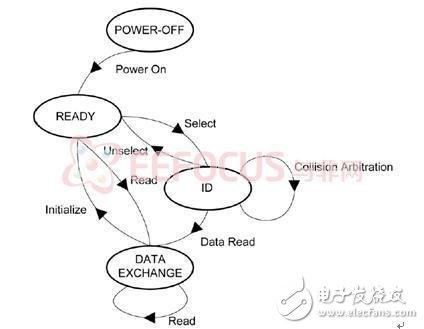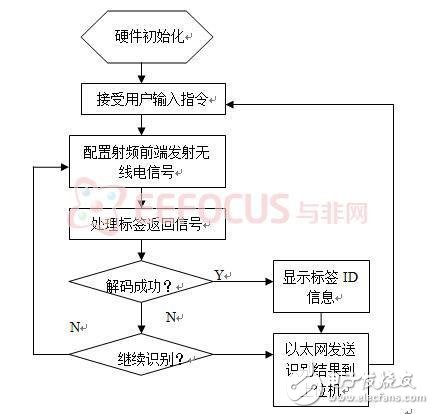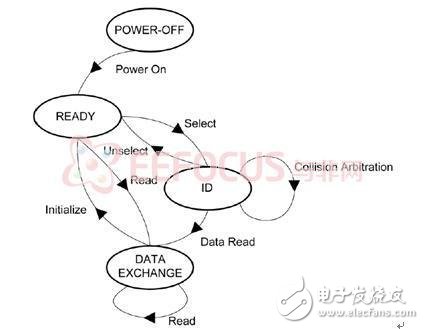The concept of “Internet of Things†was first proposed in 1999. Specifically, it is an “Internet of Things†that covers everything in the world: In the Internet of Things, the ID code carried by RFID tags can be bundled with any item in the real world. Therefore, the object has a virtual “identity†on the network; through the ID code on the RFID tag, the attributes, features, and other information of the tag-attached item can be inquired and dynamically tracked on the network in real time. The “Internet of Things†can realize tracking and information sharing of products across the globe, greatly improving management and operational efficiency, reducing costs, and providing links to all aspects of the global supply chain (warehousing logistics, manufacturing, goods tracking, commercial retail, public services, etc.) ) Bring about deeper transformation. In order to realize the above vision, there must be a large number of distributed infrastructure—embedded RFID reader terminals with networking capabilities—to collect RFID tag information “anytime, anywhere†and achieve seamless and comprehensive coverage of the Internet of Things. Therefore, the goal of this project is to implement embedded RFID reader terminals with networking capabilities based on PIC32 technology.
System principle and technical features:The Radio Frequency Identification (RFID) system mainly consists of three parts: an electronic tag, a reader, and a data management system. As shown in Figure 1 [RFID system principle]:

Figure 1 RFID system principle
The electronic tag part can be further subdivided into two parts, a tag antenna and a tag chip. Each e-tag contains a unique identifier that represents the object to which the e-tag is attached. When the electronic tag receives the reader's transmit signal, the electronic tag is “awakeâ€, and then the corresponding action is completed according to the instructions transmitted by the reader, and the response information is transmitted back to the reader. The storage unit on the electronic tag can read and write more than 10,000 times.
The reader can also be subdivided into reader antennas and readers. The reader “wakes up†and transmits instructions to the electronic tag via the reader antenna transmit signal and receives the signal returned by the tag. After the initial filtering and signal processing, the electronic tag information is obtained and parsed, and useful data is exchanged through the network and the data management system.
The data management system mainly completes the storage and management of data information. The data management system can be served by simple local software, or distributed ERP management software that integrates RFID management modules.
The communication process of the RFID system is the process of the reader giving the RFID tag information and obtaining the information on the tag. Since the RFID tag itself has no power source, it must rely on the energy obtained from the radio frequency signal sent by the reader, the so-called beam power supply technology. However, the tag can only use energy to supply the tag itself. There is no excess energy for the RF signal source. Passive reflection modulation technology must be used to achieve communication between the RFID reader and the tag. Passive-reflection modulation technology means that there is only one transmitter, the reader, in the entire communication process of the RFID system. The RFID tag modulates the continuous wave RF signal emitted by the reader during the response process, and then reflects the modulated RF signal back and receives the decoding by the reader to complete the information transmission function. The beam power supply technology and passive reflection modulation technology are two key technologies of the reflective modulation type RFID system.
As shown in Fig. 2 [Features of RFID System], the UHF-band reflection-modulation RFID system mainly includes two parts: an RFID reader and an RFID tag, and a wireless channel communication is established between the reader antenna and the tag antenna.

Figure 2 RFID System Technical Features
RFID system communication can be roughly divided into two stages according to the sequence:
In the first stage, the reader modulates the baseband transmit signal onto a carrier wave and sends it to the tag. The tag acquires energy from the carrier wave and demodulates the baseband signal transmitted by the reader to obtain the command issued by the reader.
In the second stage, the reader continuously transmits the unmodulated carrier to provide the energy for continuous operation of the tag, and the carrier for the tag reflection modulation; the tag reflects and modulates the return information of the tag to the reader according to the content of the received reader instruction. On a continuous carrier, it is transmitted to the reader. After receiving the tag return signal, the reader demodulates the desired baseband signal.
Software flow description (allowed formats doc, pdf, vsd, rar, zip):

Figure 3 [system software process]

Figure 4 [Label Identification Protocol]
Background of the projectSince the 21st century, RFID technology has developed rapidly throughout the world, and the application level has become more and more diversified. In particular, UHF RFID technology for long-distance identification is considered as a "killer" application for RFID. Wal-Mart Inc., the world's largest retailer, has introduced UHF RFID technology into its logistics supply chain since 2004: when global suppliers are required to ship to Wal-Mart warehouses around the world, their products must carry UHF. Band RFID tags to facilitate logistics operations. Driven by Wal-Mart and other multinational retail giants, RFID technology is becoming the basis for global trade and supply chain management following bar codes.
Under this scenario, manufacturers, wholesalers, and retailers all over the world (including China) are building RFID infrastructure that meets Wal-Mart's requirements. The demand for RFID readers, especially UHF RFID readers, is increasing day by day. Driven by the huge global demand, RFID readers are expected to become another growth point in the electronic information industry following mobile phones and computers. Giants at home and abroad have invested heavily in development. This project uses Microchip's PIC32 series MCU devices to realize a low-cost and compact UHF-band RFID reader, significantly reducing the size, cost, and power consumption of existing RFID readers, and improving our country's independent intellectual property rights for RFID reading and writing. Industry competitiveness.
Application scope:
The UHF RFID reader implemented in this work, together with RFID tags, is an RFID system that can be widely used in the following industry sectors:
manufacturing:
To achieve "fine manufacturing" and personalized custom production, improve labor productivity, protect the quality of products, thereby increasing corporate profits.
Enterprise Supply Chain Management:
It can effectively reduce the stock of inventory, improve the efficiency of capital turnover, reduce the demand for liquidity, and bring potential benefits to the company.
Warehousing, logistics and transportation:
Monitor the whole process of logistics and realize automatic tracking of transportation routes. Improve the accuracy of dispatch, reliability and efficiency of delivery, and reduce the cost of warehousing, distribution, and transportation.
Business Process Management:
It will help retailers increase the supply of orders, reduce the risk of out-of-stock and slow-moving goods, and increase the efficiency of inventory clearance and inventory checking.
Asset Tracking Management:
It can effectively track corporate fixed assets and valuables, and reduce human and material expenses in this area.
Overall project design

As shown in Figure 5 [RFID reader structure diagram], the RFID reader is divided into three bases: front-end baseband, front-end RF and external interface. The baseband part is completely realized by the Cerebot 32M*4 development board, and the external interface includes the network communication peripheral. Module Pmod NIC and human-machine interface Pmod CLS character LCD interface.
RFID reader function implementation methods:
(1) Event scheduling: Using the PIC32 chip to implement simple RFID identification, display and communication event scheduling functions.
(2) External communication: Use Pmod NIC peripheral module to realize Ethernet communication function.
(3) RFID signal processing: Using PIC32 chip to achieve basic signal sampling, shaping, digital filtering and decoding capabilities.
(4) Human-Machine Interface: All event scheduling information, debugging information, and identified RFID tag ID numbers are displayed to the operator via the Pmod CLS peripheral module.
HIGH QUALITY:Made of only the highest quality materials and built to last! Our chargers are gauranteed to match the original brand name chargers' quality.
EASY TO USE: Simply plug the charger into a wall outlet and then directly into your scooter.
The charger protected: Short circuit protection/ over current protection/ over voltage protection; red light -- charging, green light -- charge OK, it stop automatically when the battery is full. Warm Tips: To avoid the temperature of your charger too high, please do not charge too long.
The shell is made by high-quality plastic, smooth appearance with no impurities. Good safety performance, more reliable for you to use. Red light means charging; Green light means fully charged or disconnect.Aviation Plug Scooter Charger,Power Scooter Charger,Li-Ion Battery Charger
Shenzhen Waweis Technology Co., Ltd. , https://www.szwaweischarger.com